Southeast Arizona is one of the most interesting areas for birders in all of North America. People from all over the world come here just to see our fabulous birds. Most of our bird diversity is in the mountains and canyons of the Chiricahuas, Huachucas, and Santa Ritas. But even in the city of Tucson, we have an abundance of beautiful and interesting birds. If you live in Tucson and don't pay attention to the birds around you, you are missing out on a great opportunity to enrich your life. On this page, I will introduce you to a few birds that are common in the neighborhoods of urban Tucson. I hope that this information will serve as a starting point for further explorations of the birds in and around Tucson.
- Gambel's Quail
- White-winged Dove
- Mourning Dove
- Inca Dove
- Anna's Hummingbird
- Gila Woodpecker
- Cactus Wren
- Northern Mockingbird
- Curve-billed Thrasher
- European Starling
- Great-tailed Grackle
- Northern Cardinal
- Lesser Goldfinch
- House Finch
- Verdin
Gambel's Quail (Callipepla gambelii)




Male (left) and female (right) Gambel's quail. Images © Patrick Coin
This beautiful, conspicuous bird is easily recognized by the slender, plume-shaped crest, which often curves forward, so that the tip is in front of the bill. Adult males have dark patches on throat and belly, while females and immatures lack these striking markings. The California quail (Callipepla californica) has a very similar appearance, but this species does not occur in the Tucson area.
Gambel's quail is native to the desert regions of the southwestern United States and northern Mexico. They are gregarious, mostly ground-dwelling birds. In fall and winter, they gather into large groups called coveys. During the summer months, small family groups can often be seen running swiftly down alleys and quiet neighborhood streets in Tucson. They are particularly common near washes and other areas with native vegetation. Their diet is very diverse including seeds, fruit, green leafy material, as well as insects and other small arthropods. Quail travelling together often noisily communicate with one another, and once you've learned their call, you'll always know when they are around. If you get too close, Gambel's quail will issue urgent alarm calls and quickly run away or fly off. They often seek refuge in trees and shrubs when sensing danger, and they roost in trees at night. If you walk in a wash in the evening, you will often flush a covey of quail that had settled in a tree for the night.
Gambel's quail are representatives of the Odontophoridae, the New World Quail family. Their closest relatives are the California quail, scaled quail, and elegant quail in the genus Callipepla. They are only remotely related to Old World quail in the Pheasant Family, Phasianidae. When you order quail meat or eggs in a restaurant, you will most likely get a phasianid species, the Japanese quail, Coturnix japonica, which is widely bred and raised for food.
Sound Clips
Movie Clips
 View Gambel's Quail in a vacant lot in midtown Tucson.
View Gambel's Quail in a vacant lot in midtown Tucson. View Gambel's Quail dustbathing
View Gambel's Quail dustbathing View Desert cottontail and Gambel's quail
View Desert cottontail and Gambel's quail more Callipepla gambelii movies
more Callipepla gambelii movies
White-winged Dove (Zenaida asiatica)

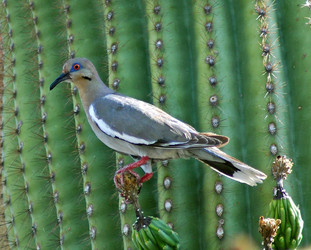
White-winged dove. Image © Scott Page
The white-winged dove is a fairly large dove with a long bill. It can be distinguished from all other doves in our area by the white ends of the outer wing coverts (small feathers which cover the bases of the longer wing feathers). They form a broad white band along the edge of the wing when it is folded and across the wing when it is opened. The reddish eye is surrounded by bright blue skin, and there is a dark streak on the cheek below the eye.
The white-winged dove is native to the southwestern United States, Mexico, and Central America. These doves breed in the Tucson area during the summer, and they are very abundant from April to September in mid-town neighborhoods. In early fall, most individuals migrate south to overwinter. The diet of the white-winged dove consists of seeds, berries, and other fruit. In Tucson, they can often be seen feeding on cactus fruit.
The closest relative of the white-winged dove is the West-Peruvian dove, Zenaida meloda, which inhabits the arid tropical regions of northwestern South America. Other members of the genus Zenaida include the mourning dove and several other Central and South American doves. Closely related genera are the mostly tropical American Leptotila and quail doves (Geotrygon).
Sound Clip
Movie Clips
 View White-winged Dove feeding on opuntia fruit
View White-winged Dove feeding on opuntia fruit View White-winged Dove grooming
View White-winged Dove grooming View White-winged Doves
View White-winged Doves more Zenaida asiatica movies
more Zenaida asiatica movies
Mourning Dove (Zenaida macroura)
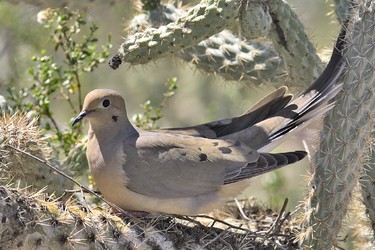
Mourning dove. Image © Al And Elaine Wilson
Mourning doves are about the same size as white-winged doves, but they are more slender and have a smaller head and thinner neck and bill. Their plumage is mostly greyish-brown with a few large dark spots on the upperwings. The tail is long and pointed and has white outer edges.
This dove is widely distributed across North and Central America. It occurs year-round in Tucson and is common throughout the city. Pairs often build their nest in cacti, especially chollas. If you keep your ears open while walking through your neighborhood, you can tell the presence of mourning doves not only by their song but also by the characteristic whistle of their wings when they take flight. These doves can often be seen feeding in pairs or small groups on the ground. Their diet consists of seeds of annual weeds and grains.
The mourning dove's closest relative is most likely the Soccoro dove, Zenaida graysoni, which used to inhabit Socorro in the Revillagigedo Islands off the west coast of Mexico. Unfortunately, this dove is now extinct in the wild. Other members of the genus Zenaida include the white-winged dove and several other Central and South American doves. Closely related genera are the mostly tropical American Leptotila and quail doves (Geotrygon).
Sound Clip
Movie Clips
 View Mourning dove foraging
View Mourning dove foraging View Mourning dove nesting
View Mourning dove nesting View Mourning Dove
View Mourning Dove more Zenaida macroura movies
more Zenaida macroura movies
Inca Dove (Scardafella inca)
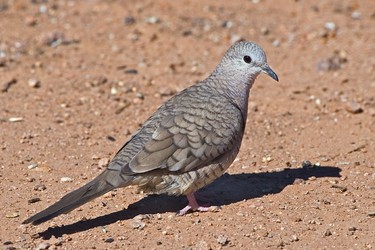
Inca dove. Image © Al And Elaine Wilson
Inca doves are small, slender doves with a long tail. The tail is narrow and pointed when folded, and the white outermost tail feathers are revealed when it is spread. The body is mostly light-gray, but the very tips of the feathers on the head, breast, and back are dark giving the plumage a scaly appearance. When the birds take flight, they make a characteristic buzzing sound, and conspicuous rusty-brown patches become visible on the wings.
Inca doves occur in the southwestern United States, Mexico, and much of Central America. They can be seen year-round all over Tucson, particularly in parks and gardens. They forage in pairs or small flocks for seeds on the ground and often roost communally in trees or on power lines. In winter they often huddle together, apparently to keep warm.
The closest relative of the inca dove is the scaled dove, Scardafella squammata, which occurs in two disjunct populations in northern and central South America. Other related doves are mostly tropical American ground doves in the genera Columbina, Metriopelia, and Uropelia.
Sound Clip
Movie Clips
 View Inca Doves foraging, grooming, stretching
View Inca Doves foraging, grooming, stretching View Inca Doves foraging
View Inca Doves foraging View Inca Dove
View Inca Dove more Scardafella inca movies
more Scardafella inca movies
Anna's Hummingbird (Calypte anna)
Male Anna's hummingbirds are easily recognized by their crimson crown (top of head) and gorget (throat). The tail is dark, the belly is greyish white, and the back is iridescent green as in most hummingbirds. Females and immatures lack the crimson crown and show varying degrees of red spotting on the throat. The tips of their tail feathers are white. Females and immatures of most hummingbird species are very difficult to tell apart, and field identification is often impossible.
This beautiful little bird occurs along the western edge of North America from southern Alaska to northwestern Mexico. It is common in Tucson gardens and open spaces and especially seems to like areas where there is plenty of creosote. Like other hummingbirds, Anna's is a skilled flyer that can hover in the air and fly backwards. It has a typical long, slender bill which it uses to feed on nectar, pollen, and insects. It often catches insects in flight, and it will stick out its long, skinny tounge during and after feeding.
The Anna's closest relative is Costa's hummingbird, Calypte costae. Costa's also occurs in Tucson but it is much less common than Anna's. Hummingbirds are closely related to swifts and treeswifts, which are birds with highly aerial lifestyles that catch insects in flight and superficially resemble swallows.
Sound Clip
Movie Clips
 View Anna's Hummingbird close-up
View Anna's Hummingbird close-up View Anna's Hummingbird Juvenile Male
View Anna's Hummingbird Juvenile Male View Anna's Hummingbird on creosote
View Anna's Hummingbird on creosote more Calypte anna movies
more Calypte anna movies
Gila Woodpecker (Melanerpes uropygialis)
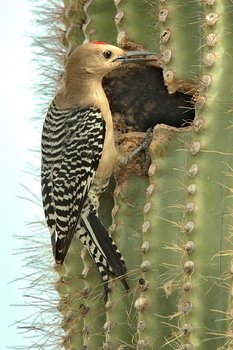
Gila woodpecker male. Image © Al And Elaine Wilson
Gila woodpeckers have a striking black and white barred pattern on their back, upper wings, and tail. In flight, there are also large white wing patches. The rest of the body is tan, and the male has a small, round, red cap on its crown (top of the head).
This woodpecker is native to southern Arizona, southeast California, southern Nevada, southwestern New Mexico, and western to central Mexico. It is a very active, noisy bird, and its penetrating call can be heard throughout Tucson all year round. Gila woodpeckers are most often seen clinging vertically to trees, cacti, or telephone poles, excavating insects with their strong bill. While hammering on wood, or sometimes even metal roofs or drainpipes, their beaks make a characteristic drumming noise. In addition to insects, they also eat various fruits and berries. Gila woodpeckers often nest in cavities which they carve out from saguaros. Once the woodpeckers abandon their nest, a variety of other animals including lizards, owls, and rodents use them for shelter.
The gila woodpecker is part of the widespread, diverse, New World genus Melanerpes, which also includes the acorn woodpecker, Melanerpes formicivorus and the golden-fronted woodpecker, Melanerpes aurifrons. The closest relatives of the Melanerpes woodpeckers are the the sapsuckers in the genus Sphyrapicus.
Sound Clip
Movie Clips
 View Gila Woodpecker foraging
View Gila Woodpecker foraging View Gila Woodpecker on saguaro
View Gila Woodpecker on saguaro View Gila Woodpecker chase
View Gila Woodpecker chase more Melanerpes uropygialis movies
more Melanerpes uropygialis movies
Cactus Wren (Campylorhynchus brunneicapillus)
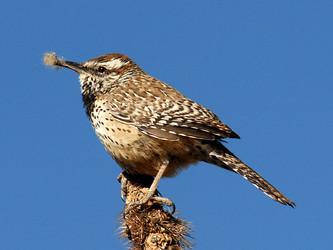
Cactus wren. Image © Glenn Seplak
Cactus wrens are fairly large, conspicuous birds with a loud, monotonous, churring call. They are easily recognized by their heavily streaked and spotted plumage. They have a long white eye stripe, buff belly, dense black spots on the upper breast, black and white streaks and spots on the back and upper wings, and a long tail with black and white bars. Males and females look very similar.
Cactus wrens are residents of arid habitats in the southwestern United States and Mexico. They are quite common in the city, especially in gardens and vacant lots with cacti and shrubs like jojoba and creosote. They build large grass nests in cactus, especially chollas, shrubs or small trees. They have a long, slender, slightly curved bill, and they feed mostly on insects on the ground or near the ground in cactus or shrubs. Their foraging behavior is a lot of fun to watch as they peck at leaves, rummage through sticks, toss about small rocks, and peer into holes and crevices. They can also often be seen dust-bathing.
Cactus wrens are members of the almost exclusively South and Middle American wren family, the Troglodytidae. This group consists of about 80 species of mostly small, brown birds. The closest relatives of the wrens are the gnatcatchers, Polioptilidae, a group of small grey birds occurring mostly in tropical and subtropical parts of the New World. Other closely related families are the treecreepers (Certhiidae, with only one representative in North America, the Brown Creeper, Certhia americana) and nuthatches (Sittidae, distributed throughout the Northern Hemisphere).
Sound Clip
Movie Clip
 View Cactus Wren foraging
View Cactus Wren foraging View Cactus Wrens dustbathing
View Cactus Wrens dustbathing View Cactus Wrens swaying in the wind
View Cactus Wrens swaying in the wind more Campylorhynchus brunneicapillus movies
more Campylorhynchus brunneicapillus movies
Northern Mockingbird (Mimus polyglottos)
Description coming soon!
Sound Clips
 Listen to Northern Mockingbird songs
Listen to Northern Mockingbird songs Listen to Northern Mockingbird song
Listen to Northern Mockingbird song Listen to Northern Mockingbird 'chak' call and aggressive call
Listen to Northern Mockingbird 'chak' call and aggressive call
Movie Clips
 View Mockingbird singing
View Mockingbird singing View Mockingbird harassing Harris's Hawk
View Mockingbird harassing Harris's Hawk View Mockingbird harassing raven
View Mockingbird harassing raven more Mimus polyglottos movies
more Mimus polyglottos movies
Curve-billed Thrasher (Toxostoma curvirostre)
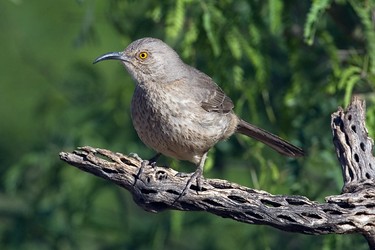
Curve-billed Thrasher. Image © Al And Elaine Wilson
Description coming soon!
Sound Clip
Movie Clips
 View Curve-billed Thrasher feeding on opuntia fruit
View Curve-billed Thrasher feeding on opuntia fruit View Curve-billed Thrasher on opuntia
View Curve-billed Thrasher on opuntia View Curve-billed Thrasher scratching
View Curve-billed Thrasher scratching more Toxostoma curvirostre movies
more Toxostoma curvirostre movies
European Starling (Sturnus vulgaris)
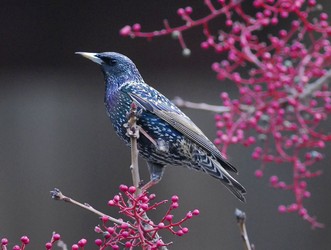
European starling. Images © Doug Greenberg
Description coming soon!
Sound Clip
Movie Clip
 View European Starling calling
View European Starling calling View European Starlings wing-waving display
View European Starlings wing-waving display View European Starlings interaction at nest cavity
View European Starlings interaction at nest cavity more Sturnus vulgaris movies
more Sturnus vulgaris movies
Great-tailed Grackle (Quiscalus mexicanus)
Description coming soon!
Sound Clips
 Listen to Quiscalus mexicanus song (machine gun)
Listen to Quiscalus mexicanus song (machine gun) Listen to Quiscalus mexicanus song (peep)
Listen to Quiscalus mexicanus song (peep) Listen to Quiscalus mexicanus song
Listen to Quiscalus mexicanus song
Movie Clips
 View Great-tailed Grackle male in a tree
View Great-tailed Grackle male in a tree View Great-tailed Grackle female eating a caterpillar
View Great-tailed Grackle female eating a caterpillar View Young Great-tailed Grackle foraging
View Young Great-tailed Grackle foraging more Quiscalus mexicanus movies
more Quiscalus mexicanus movies
Northern Cardinal (Cardinalis cardinalis)
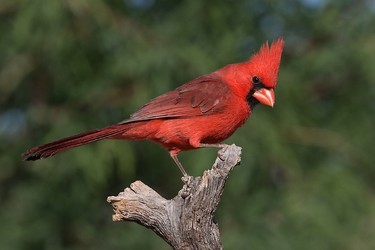
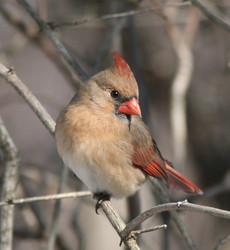
Male (left, image © Al And Elaine Wilson) and female (right, image © Henry T. McLin) Northern cardinal.
Description coming soon!
Sound Clip
Movie Clip
Lesser Goldfinch (Carduelis psaltria)
Description coming soon!
Sound Clip
Movie Clip
House Finch (Carpodacus mexicanus)
Description coming soon!
Sound Clip
Movie Clip
Verdin (Auriparus flaviceps)
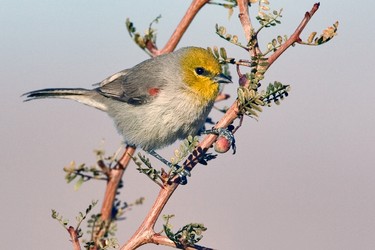
Verdin. Image © Al And Elaine Wilson
Description coming soon!
Sound Clip
Movie Clip
Information on the Internet
-
Tucson Bird Count
The Tucson Bird Count (TBC) is a cooperative project begun by members of Tucson's science, conservation, and birding communities. Each year, TBC volunteers (each on a morning of their choosing) collect data on the abundances and distributions of bird species from hundreds of sites in and around the Tucson area.
- Tucson Bird ID Center. This page contains links to descriptions, photos, and sounds of many additional birds that can be found in Tucson.
- Birds and their Songs Arizona State University Ask a Biologist and Audubon Arizona.
-
Tucson Audubon Society
Resources for birding in southeast Arizona.
- Dastardly Duos. A series of articles by Larry Liese about pairs of species that are difficult to separate in the field.
- Urban Birds / Aves Urbanas. A series of brief articles describing convenient places to enjoy watching birds in the Tucson urban area.
- Arizona Field Ornithologists Arizona Field Ornithologists is an organization of birders and ornithologists dedicated to increasing the knowledge of the identification, status, and distribution of Arizona’s birdlife.
- Southeastern Arizona Bird Observatory (SABO) The Southeastern Arizona Bird Observatory (SABO) is a non-profit organization dedicated to the conservation of the birds of southeastern Arizona, their habitats and the diversity of species that share those habitats through research, monitoring and public education.
- xeno-canto :: bird songs from tropical america This site has lots of songs of birds occurring in southeast Arizona.
- The Firefly Forest A combination nature journal and species identification guide with photographs, stories, and information primarily about Tucson, Arizona and Sonoran Desert wildflowers, plants, birds, animals, and other wildlife, as well as many other related (and unrelated) things.
- WildBird's Top 50 Birding Hotspots: Southeast Arizona A page on the U.S. Geological Survey site.
- Dove Detectives A study of where doves and pigeons are seen in cities. Cornell Lab of Ornithology.
- All About Birds Comprehensive information about North American birds.


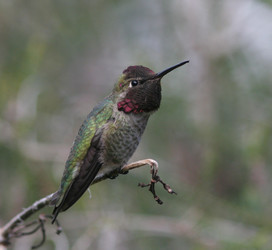
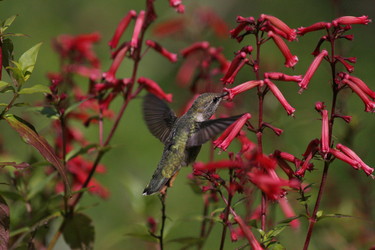
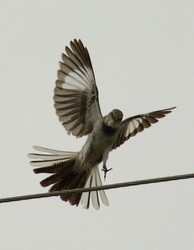
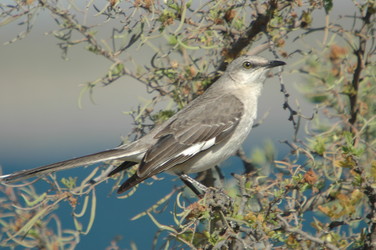
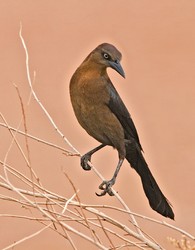
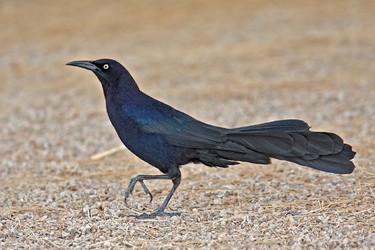
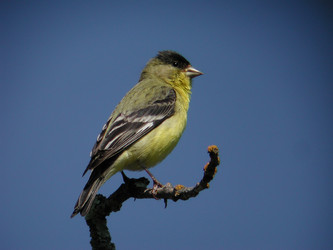
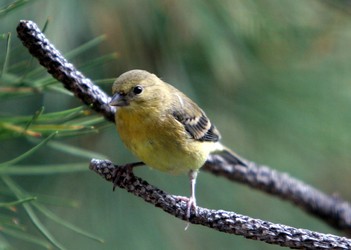
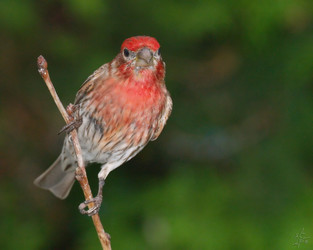

 This page was developed as part of the project "New Strategies for Life Sciences Outreach in Arizona: Developing a Digital Library of Audio and Video Features in the Context of the Tree of Life Web Project" funded by the
This page was developed as part of the project "New Strategies for Life Sciences Outreach in Arizona: Developing a Digital Library of Audio and Video Features in the Context of the Tree of Life Web Project" funded by the 



 Go to quick links
Go to quick search
Go to navigation for this section of the ToL site
Go to detailed links for the ToL site
Go to quick links
Go to quick search
Go to navigation for this section of the ToL site
Go to detailed links for the ToL site